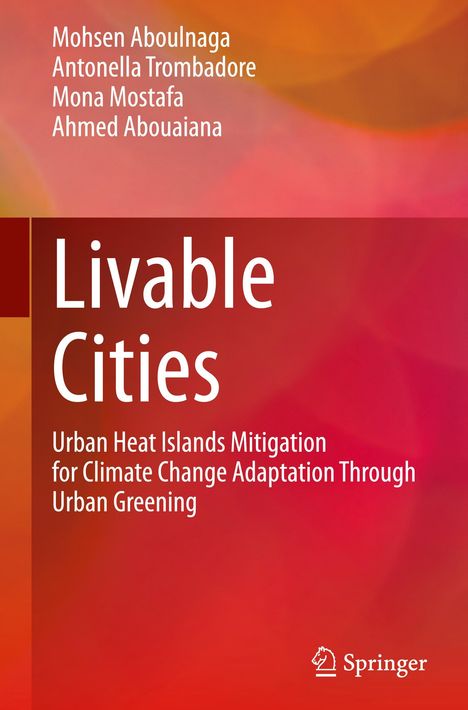Mohsen Aboulnaga: Livable Cities, Gebunden
Livable Cities
- Urban Heat Islands Mitigation for Climate Change Adaptation Through Urban Greening
(soweit verfügbar beim Lieferanten)
- Verlag:
- Springer Nature Switzerland, 07/2024
- Einband:
- Gebunden, HC runder Rücken kaschiert
- Sprache:
- Englisch
- ISBN-13:
- 9783031512193
- Artikelnummer:
- 11909972
- Umfang:
- 840 Seiten
- Nummer der Auflage:
- 2024
- Ausgabe:
- 2024
- Gewicht:
- 1408 g
- Maße:
- 241 x 160 mm
- Stärke:
- 51 mm
- Erscheinungstermin:
- 2.7.2024
- Hinweis
-
Achtung: Artikel ist nicht in deutscher Sprache!
Klappentext
Livable Cities: Urban Heat Islands Mitigation for Climate Change Adaptation Through Urban Greening elucidates on livability in urban areas, providing readers with definitions and indicators of what makes a city livable. It comprehensively introduces the urban heat island effect (UHIE) and offers strategies for mitigating high surface temperatures in metropolitan areas and adapting to climate change (CC). The coverage highlights the linkage between UHIE and Sustainable Development Goals (SDGs), the socio-economic impacts of urban heat islands (UHIs), their effect on livability for citizens, and the costs and benefits of mitigating UHI. In addition, it encompasses background information about the problems and challenges that megacities face in the 21st century, followed by the cooling benefits that can be achieved from the different types of urban green coverage (UGC), whether conventional or innovative.
The book presents case studies on six cities that have successfully applied UGC: Chicago (United States), Curitiba (Brazil), Stuttgart (Germany), Tokyo (Asia), Melbourne (Australia), and Johannesburg (South Africa). Additional case studies illustrate UHIE mapping in greater Cairo, Egypt, and Rome, Italy, to determine hot spot areas that need interventions and prioritization of UGC. Highlights also include the role of blue and green infrastructures in creating livable cities in the post-COVID-19 world, trends of bi-correlation between urban green spaces (UGSs), UGC, and COVID-19, and global patterns of UGSs to shape better healthy, sustainable, and resilient cities.
Explains urban heat islands, their causes, and strategies for climate change adaptation to create livable cities; Highlights the role of urban green coverage in post-COVID-19 regulations in shaping more livable, sustainable, and resilient cities. Explores ways to reduce the urban heat island effect by exploiting urban greening to mitigate high temperatures in large cities like Cairo and Rome.


